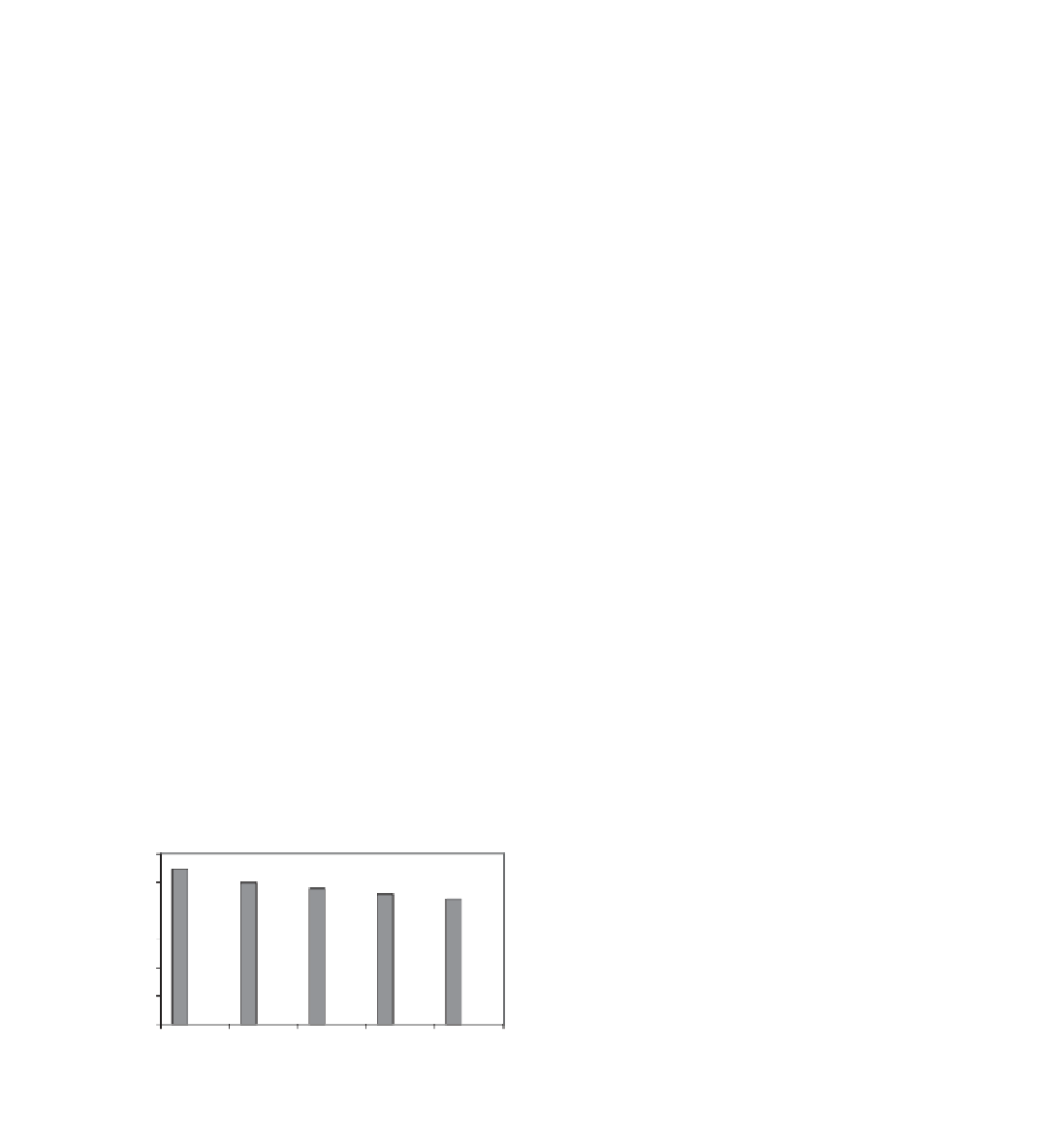Agriculture Reference
In-Depth Information
for other characters, such as improved milling
yield (Marshall et al., 1986).
Many synthetic derived materials show
improved stay-green or green-leaf duration,
whereby leaves and stems maintain their photo-
synthetic capability longer in the crop cycle than
plants with less stay-green capability. This char-
acter has been implicated in conferring heat tol-
erance in wheat (Reynolds et al., 1994). Figure
16.2 shows the performance of several synthetic
wheat derivatives tested in the fi eld in northwest-
ern Mexico. These materials were sown in mid-
January, 8 weeks later than the optimal planting
date for wheat, thereby subjecting the crop to
temperatures in excess of 35 ºC during anthesis
and subsequent grain fi lling. The plots were fully
irrigated to ensure drought stress did not con-
found the results. Synthetic derivatives with
30% higher yield compared to the commonly
grown check cultivar were identifi ed. However,
the transferability of this response to other
environments is yet to be determined. While
signifi cant variation among primary synthetics
for tolerance to salinity, low soil Zn, B toxicity,
and waterlogging has been found (see previous
section, “Primary synthetic hexaploid wheat”)
and used by plant breeders in their crossing
programs (Villareal and Mujeeb-Kazi 1999;
Reynolds et al., 2005), no published evidence
exists to date of the performance of the derived
materials.
Ortiz-Monasterio et al. (2007) reported an
attempt to improve the nutritional value of
adapted wheat cultivars by transferring high Zn
and Fe concentration from a
T. dicoccum
-based
primary synthetic wheat. However, as most
micronutrients are found in the aleurone layer, it
is diffi cult to simultaneously improve yield and
micronutrient concentration; increasing yield
decreases the aleurone-endosperm ratio, thereby
diluting grain Fe and Zn concentration. The
resultant synthetic derivatives were developed by
selecting for Zn and Fe concentration in Mexico.
They were subsequently tested in multienviron-
ment yield trials across Pakistan, and derivatives
higher yielding than the check cultivars and
recurrent parents were observed. However, the
Zn concentration of these lines did not change
and the improvement in Fe concentration, while
signifi cant, was not high enough to have an impact
on human nutrition. To date, little variation in
endosperm Fe and Zn concentration has been
found both within and external to the synthetic
wheat gene pool.
FUTURE PERSPECTIVES
The wealth of synthetic hexaploid germplasm
produced has been only partially characterized,
and variation for hitherto unreported traits,
such as resistance to take-all (caused by
Gaeu-
mannomyces graminis
var.
tritici
Sacc.) or varia-
tion for beta-carotein, may still yet be found.
The exploration of wild tetraploid germplasm,
particularly
T. dicoccum
and
T. dicoccoides
, as
potential sources of new variation in synthetic
hexaploid wheat backgrounds is very much in its
infancy.
Attempts have been made to synthesize tetra-
ploid wheat from crosses of
T. monococcum
×
T.
urartu
,
T. sinskajae
×
T. urartu
,
T. boeoticum
×
T.
urartu
,
Ae. tauschii
×
Agropyron cristatum
among
others (Gandilyan et al., 1986; Martin et al.,
1999). However, these new tetraploids have had
little impact on wheat breeding, as exploitation of
the wealth of variation in existing wild and culti-
vated tetraploid forms has proven to be more suc-
cessful. Huang et al. (1999) estimated that there
is more variability among tetraploid wheats than
hexaploid forms, underscoring the value of this
140
130
120
110
100
90
80
Syn 1
Syn 2
Syn 3
Syn 4
Syn 5
Fig. 16.2
Grain yield of fi ve synthetic derivatives in late-
sown trials compared with the locally adapted check cultivar
in Sonora, Mexico, 2004. All lines were higher yielding than
the check at
P
<
0.01.




